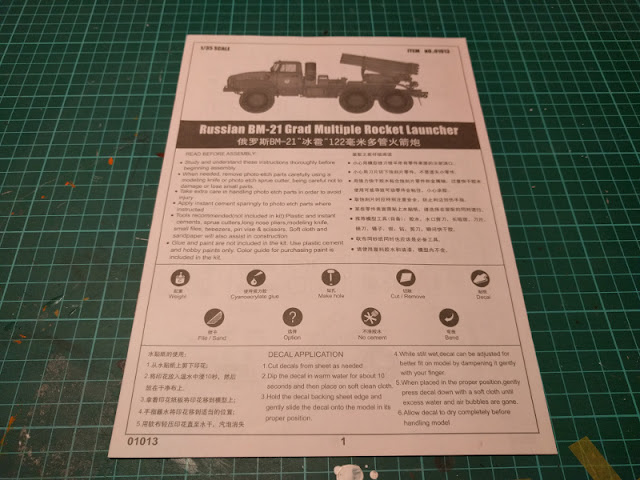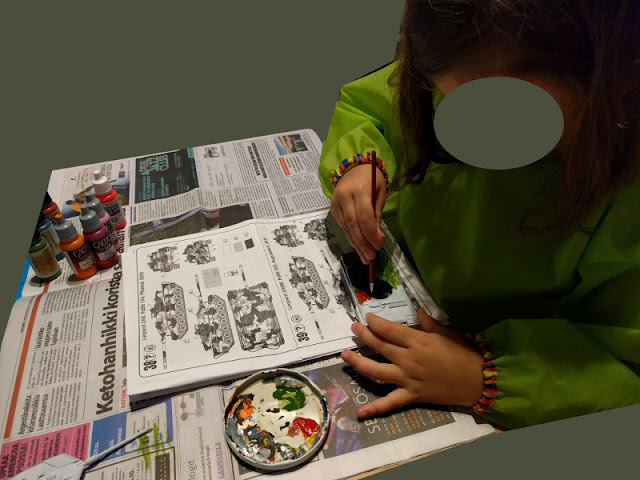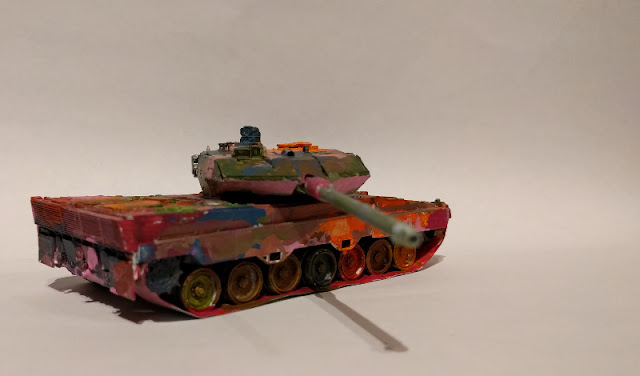On the unknown roads
Let's get this confession out of the way already: I have never had a clue of the mechanical side of cars (normal ones, vans, trucks of any sort, armored ones). Or I know the basics, that they typically have a motor, a gearbox and some wheels - if we're talking about a rear-wheel drive, there's also an axle taking space from the feet of the passengers. So if I keep talking complete and utter nonsense during this project, the reason is and will be that: I just haven't known any better ;)Framework work
I started assembling the Ural 375D by setting up the ladder-like structure that forms the structure of the whole vehicle. Between two C-shaped steel beams I attached some support pipes / tubes and a monstrosity that I assumed to be the radiator. I started swearing about the instructions at this point already: the layout (or the placing of certain bits) wasn't too clear and I was on the second step.... The pieces themselves didn't "speak out" either.Next I started building the first surprise of the kit: the engine! I was actually a bit shocked to find a detailed-looking engine straight out of the box. Judging by the angled pieces on top I thought that it's a V-8 to top it all (wikipedia confirmed my guess). I did remember that the Kraz trucks (KrAZ-255 which were given to move some field guns) that I had seen and heard go by had a very fuel-hungry V8 petrol engines, but I guessed that the Ivan used those kinds of engines quite a lot in general.
But I digress. While looking at the round bits that can be seen in the front of the motor I was pondering if I should fetch some thread or play with masking tape a bit to set up some narrower or wider belts as a detail. Then my eyes picked up the PE# markings in the instructions - they had provided photoetched bands. What in the Empire?
The gearbox was a simple box. Attaching these two into the truck's framework was a show of its own but with some swearing I got them settled in nicely.
That huge block that had appeared behind the gearbox was some sort of a power-transferring thingamagick, as some axles were going to be inserted into it going both forwards and backwards. My guess is that it had something to do with the front-wheel drive / six-wheel drive, but how was it called for real? No idea.
Next I got to build something that had to do with the differential locks or whatever those were called again but as far as I knew those things allowed the L/R wheels to spin independently or forced them to go in sync (and the point and usefulness this I learned from the relaxing and amusing Spintires). There wasn't much to say about the plastic bits, they settled into their places pretty decently, the only parts that gave me some business were the axles, mostly because they went over and under random other pieces and the instructions weren't too clear on the routes.
More mystery pieces in the photo below (going from the wheel axle bits towards each other to the center of the cradle). I guess those tiny, flimsy bits were just for some support or something, if nothing else.
After these I built some rack-like bits. One of them was the fuel tank and the other one a mystery box.. My money was on either a generic toolbox or a handy setup for some external electric connections. But this was guesswork and I wasn't curious enough to actually as google for the secrets of the Ural.
The front axle had a similar bin for the differential system, just like the rear ones. This one required an axle for the drivetrain and again my biggest issue was to figure out which route the axle was supposed to go over, under and between the other pieces.
After all that was done I got to build the cores for the wheels. There wasn't anything strange about the four rear wheels but these front wheels were more special than that. First of all there was a free-moving bit to be sealed between the inner and outer halves. Then the inner half needed some pieces, two of which I assumed to be related to the brakes and the third one was very obviously for the steering bits to attach to. Those caused me a bit of worrying as I couldn't know at this point if it was impossible to say if they were set at correct angles. Of course I could always force them in place later on, but I much rather avoided that.
Had I been planning on a diorama I'd praised the articulation possibilities of the front wheels even more than I did. Of course fooling around with them was amusing, but I just assumed that they'd end up being locked tightly straigh ahead in the end. Which wasn't that much fun, if you asked me, but having them actually articulated... urf. That'd been hair-rising.






















































